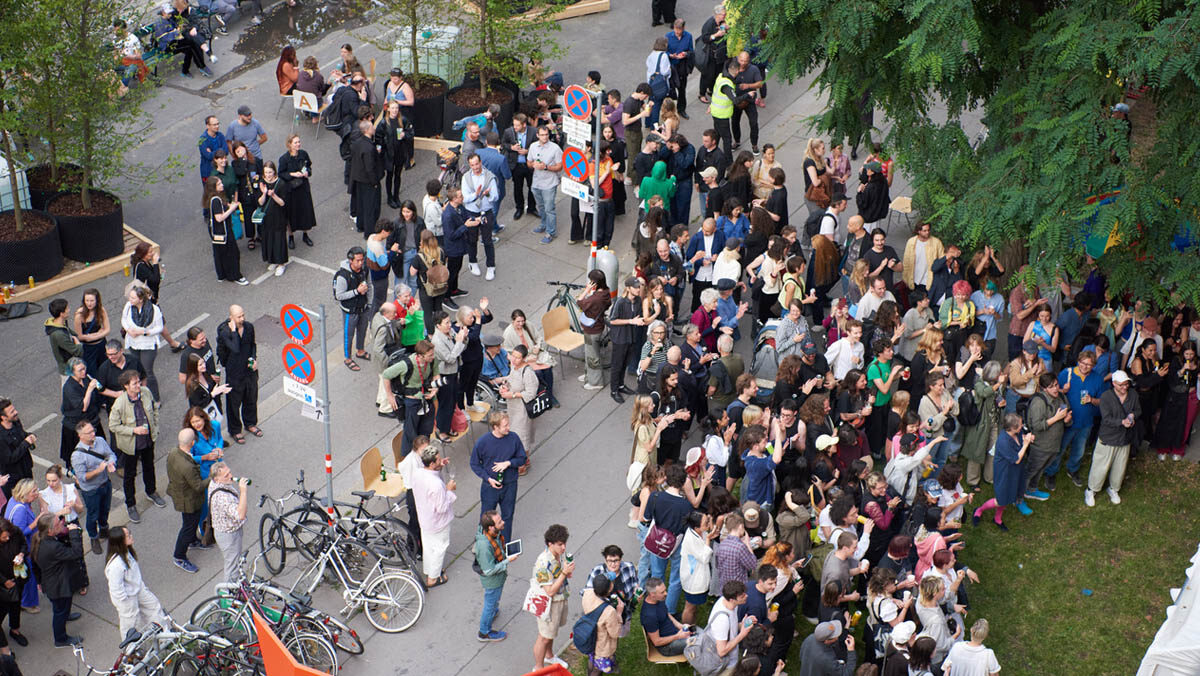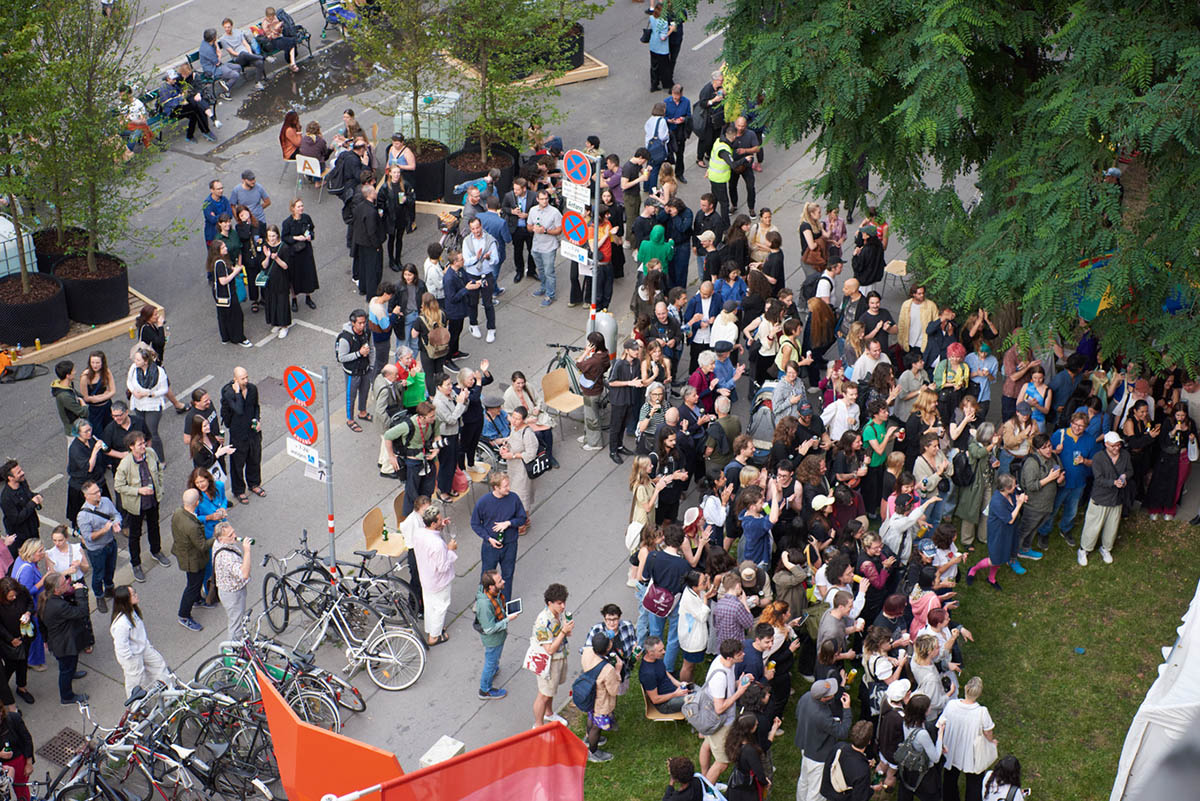
5 Jahre Angewandte Festival. Welche Aufgaben sind mittlerweile zur Routine geworden und welche Herausforderungen müssen jedes Jahr aufs Neue bewältigt werden?
Das Festival jährt sich heuer zum fünften Mal und tatsächlich ist es das erste Jahr, in dem wir eine Art Routine beginnen zu spüren. In den vergangenen Jahren musste sich das Format des Festivals immer wieder auf neue Situationen einstellen, aber wir beobachten, dass es sich innerhalb und außerhalb der Universität immer mehr etabliert. Nichtsdestotrotz liegt es in unserer Natur als lebendige Kunstuniversität, stetig in Veränderung zu sein. Somit ist und wird es wohl immer anders sein, weil die Abteilungen sich stetig weiter entwickeln, die Studierenden und Mitarbeiter*innen jedes Jahr an neuen Projekten arbeiten und damit das Festival erst gestalten. Es gibt aber durchaus auch Programmpunkte, die mittlerweile jedes Jahr stattfinden und auf die sich wieder gefreut werden kann. So ist der Donnerstag zum Paulusplatz-Tag geworden, wo ein Schwerpunkt auf den Abteilungen Ortsbezogene Kunst sowie Skulptur und Raum gelegt wird. Dort findet ein ganztägiges Programm mit Essens-Interventionen und Performances statt. Auch die Sprachkunst veranstaltet dieses Jahr wieder ihre Abschlusslesung und die Abteilung Malerei und Animationsfilm lädt zum Screening in den Innenhof des Oskar-Kokoschka-Platzes.
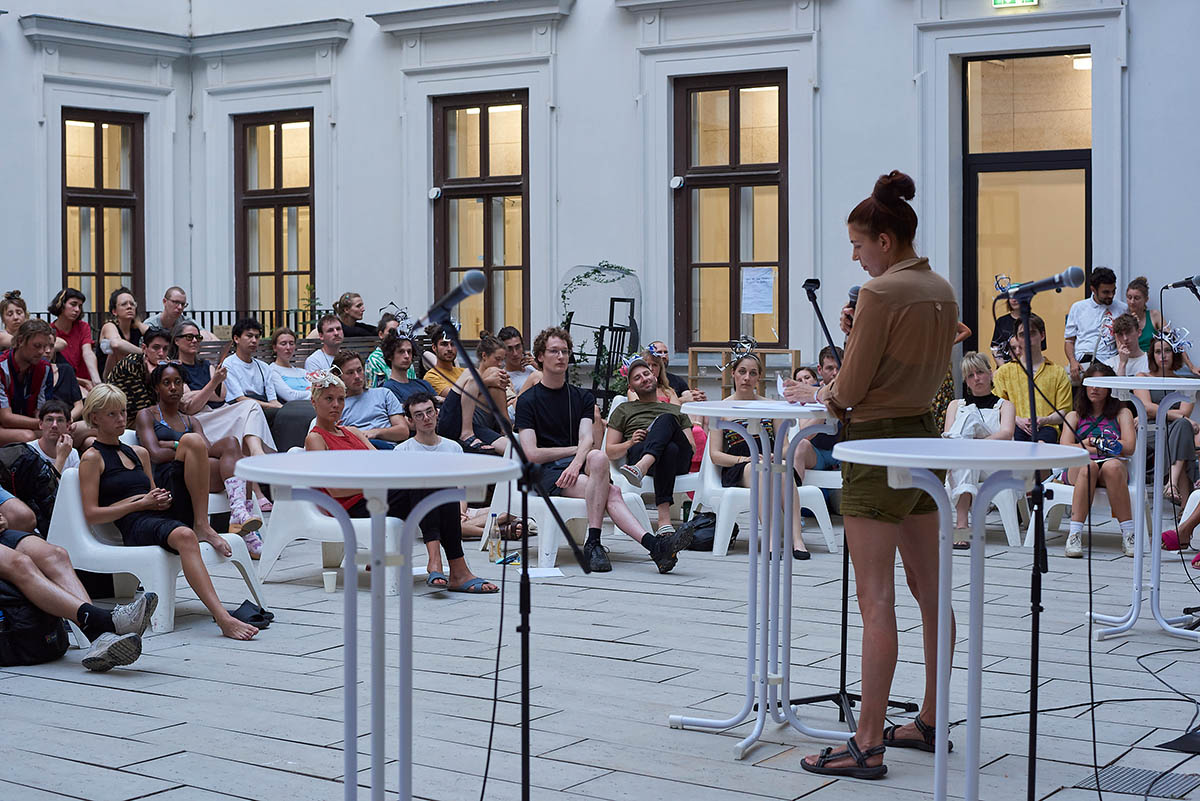
Wie hat sich das Angewandte Festival im Laufe der Jahre entwickelt?
Die Räume der Universität werden erst seitdem es das Festival gibt für die Jahresausstellung genutzt – mittlerweile wachsen vereinzelte Installationen und Präsentationen auch aus den Räumlichkeiten der Studios hinaus und treten mit den Gebäuden, Vorplätzen und der institutionellen Struktur in Beziehung. Das geht natürlich einher mit einer Auseinandersetzung mit künstlerischen, appropriativen Strategien, die sich auch in der diesjährigen Festivalgrafik widerspiegeln. Diese wird jedes Jahr in einem klasseninternen Wettbewerb entschieden. Heuer wurde sie von Studierenden der Abteilung Grafik und Werbung entwickelt und nimmt Bezug auf Tags, Gekritzeltes und Gespraytes, auf grafische Elemente, die die Studierenden in und an den Universitätsgebäuden fanden. Den Oskar-Kokoschka-Platz sperren wir auch heuer für den Verkehr und lernen ihn jedes Jahr neu und besser kennen. Dennoch stellt er immer wieder eine Herausforderung dar – öffentlicher Raum ist nie einfach. Die Platzgestaltung hat heuer Jakob Lena Knebl, Künstlerin und Leiterin der Abteilung Transmediale Kunst, übernommen – mit ihrem Konzept wird der Platz temporär zur Baumschule.
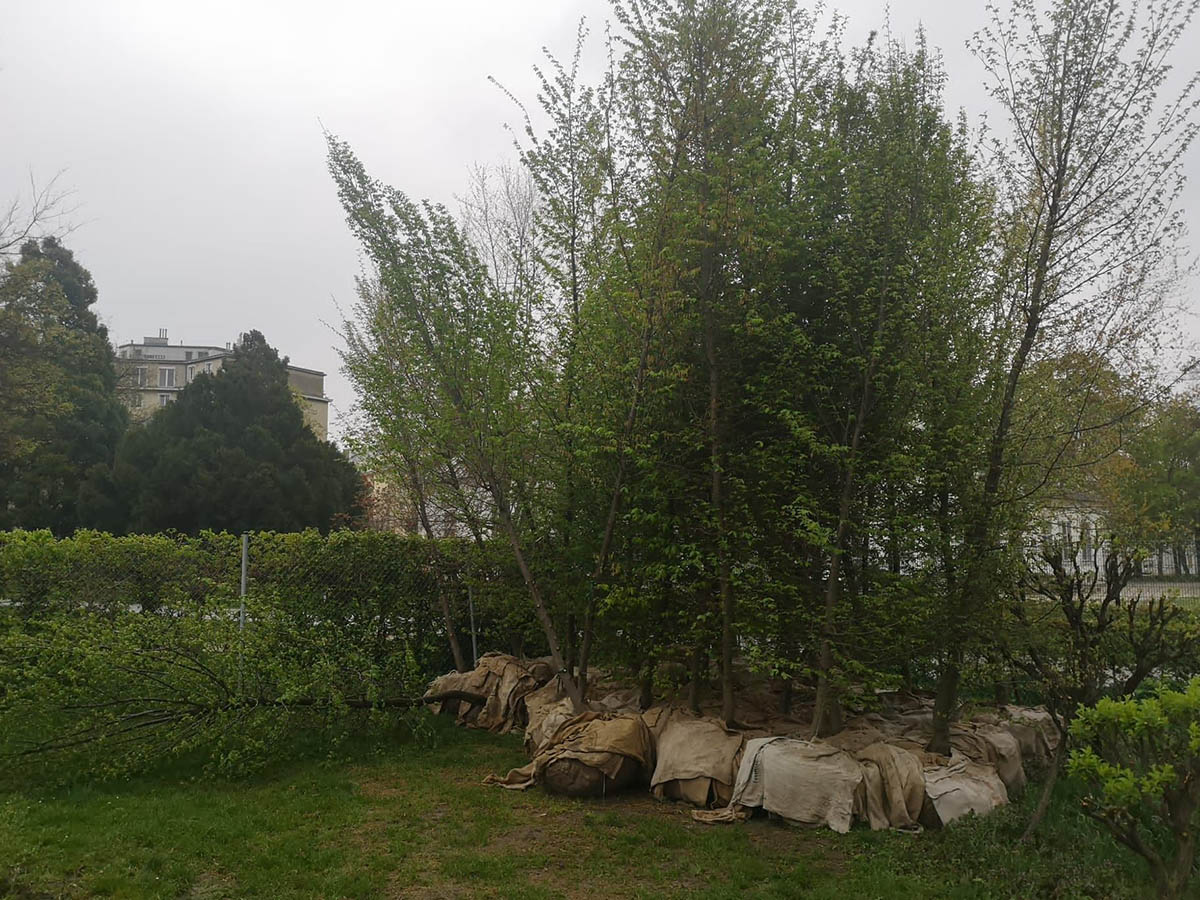
Welche besonderen Schwerpunkte wurden bei der diesjährigen Organisation des Angewandte Festivals berücksichtigt?
Die inhaltlichen Schwerpunkte ergeben sich hauptsächlich aus den Themen, die in den Abteilungen und von den Studierenden behandelt werden. Wir versuchen einen oder mehrere rote Fäden zu ziehen, diese herauszugreifen, zu verknüpfen und mit vermittelnden Formaten zu umrahmen. In den Ausstellungen und im Festivalprogramm finden sich jene Themen, die uns alle bewegen und beschäftigen. Es sind Themen die unsere Zeit widerspiegeln, Fragen zu Nachhaltigkeit und zur Klimakrise, zum Angriffskrieg in der Ukraine, dem digitalen Wandel aber auch ganz allgemein zu Formen des Zusammenlebens, die sich in den Arbeiten der Studierenden und Absolvent*innen finden.
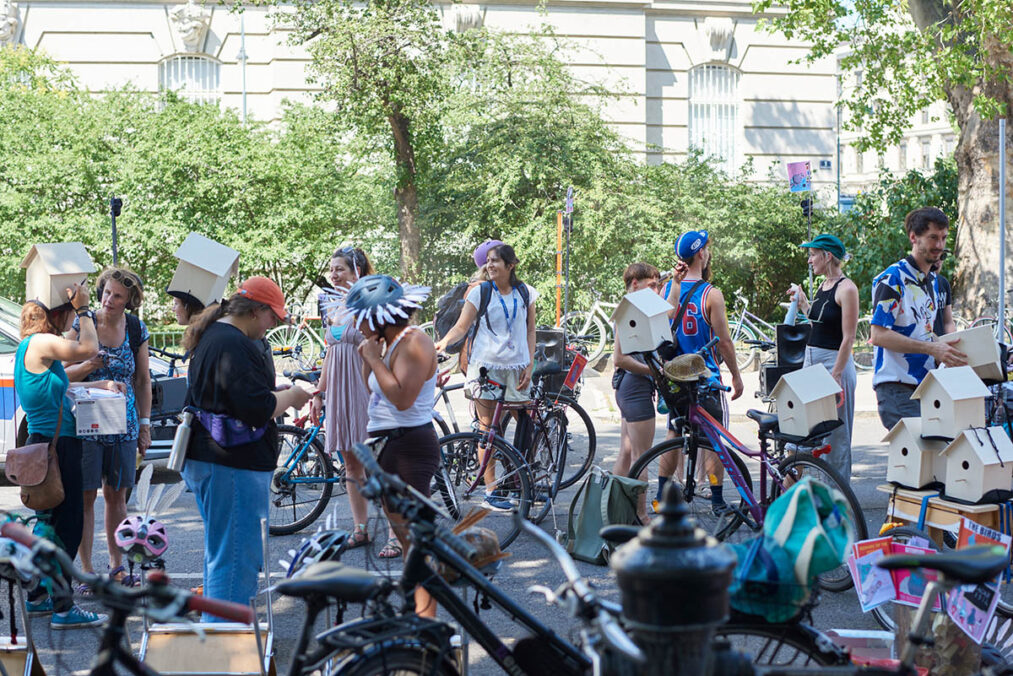
Könntet ihr mir einige bemerkenswerte Highlights oder Neuerungen nennen?
Es sind einige Studierendenprojekte auf die Beine gestellt worden, die unabhängig von Abteilungen erarbeitet wurden. Ein Beispiel ist die von Carlo Zappella (Fotografie) initiierte interaktive Gruppenausstellung Tiny Art Run bei der Studierende unterschiedlicher Abteilungen Fahrbahnabschnitte im Maßstab 1:10 für ferngesteuerte Kunsttransportboxen entwickelt haben. Aus einem Festivalbeitrag vom Vorjahr ist zum Beispiel ein langfristiger Sharing Space entstanden, der von Studierenden der Abteilung Cross-Disciplinary Strategies initiiert und von Studierenden der Architektur umgestaltet wurde. Der Sharing Space wird im Rahmen des Festivals wiedereröffnet. Es ist immer schön zu sehen, was vom Festival längerfristig bleibt und wie die Universität damit ein wenig verändert und mitgestaltet wird. Auch der Vorplatz und das Gebäude der ehem. Postsparkasse am Georg-Coch-Platz werden heuer von gleich zwei ortsspezifischen Installationen genutzt. Eine Abschlussarbeit von Wanyuan Liang (Cross-Disciplinary Strategies) verwandelt die Grünflächen vor dem Otto-Wagner-Gebäude in ein Wind-Field und mit ANIMA PSK hat Jakob Hütter (Digitale Kunst) eine 3D-Projektion für die Fassade entwickelt, die am Dienstag, 27. Juni um 21:30 Uhr gezeigt wird.
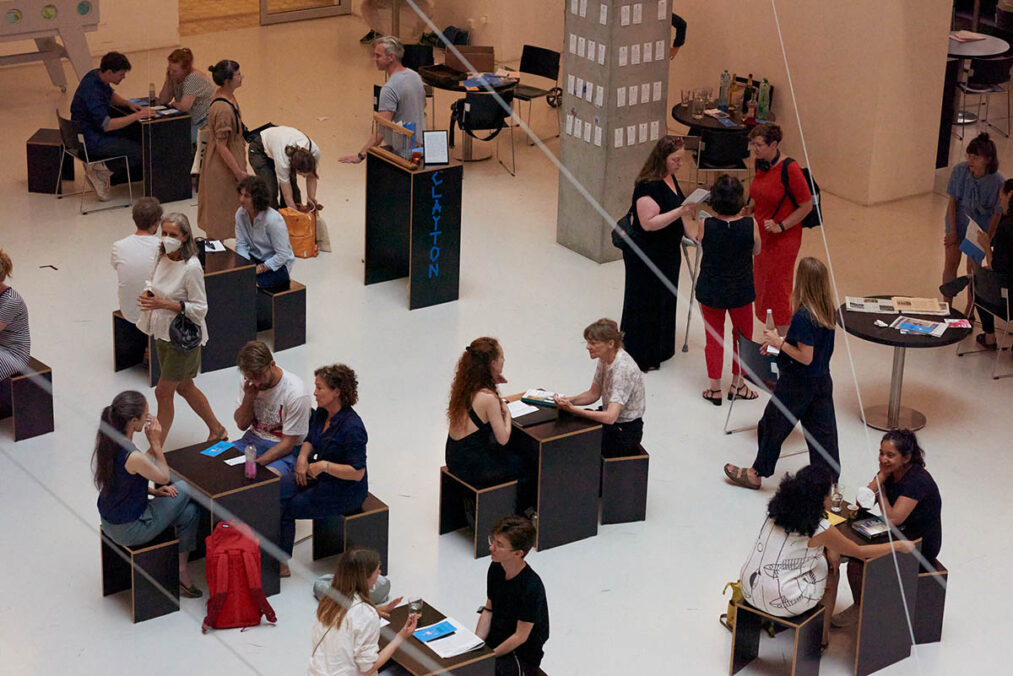
Was sollte man sich unbedingt anschauen? Gibt es besondere Orte, die man besuchen sollte?
Wenn man uns fragt, natürlich alles. Ein Tipp ist auf jeden Fall im Schwanzer-Trakt mit dem Lift ins 6. Obergeschoß zu fahren, dort die Ausstellung der Malerei anzuschauen und sich dann von oben nach unten durch die Stockwerke zu schlängeln. Und natürlich sollte man die ehem. Postsparkasse beim Besuch miteinplanen. Auch wenn die Orientierung in dem Gebäude von Otto Wagner zu Beginn vielleicht eine Herausforderung darstellt, sind die Ausstellungen der Digitalen Kunst, von Experimental Game Cultures, des Vienna Master of Applied Human Rights, von Art & Science und Cross-Disciplinary Strategies einen Besuch wert. Es gibt definitiv unansehnlichere Labyrinthe, um sich zu verlieren.
Gibt es während des Festivals Gelegenheiten für Besucher:innen, um mit den Künstler:innen in Kontakt zu treten oder um weitere Einblicke in ihre Werke zu erhalten?
Alle Ausstellungen sind durchgehend von Studierenden beaufsichtigt, wodurch die Besucher*innen sehr einfach in Austausch treten können. Genau um diesen Austausch geht es ja beim Festival, bei dem wir mit verschiedenen Formaten der multi- und transdisziplinären Ausrichtung der Studien gerecht werden wollen. Es finden außerdem täglich um 15 und um 18 Uhr Führungen zu den Ausstellungen verschiedener Abteilungen statt. Darüber hinaus gibt es Dialog- und Themenführungen, die auch teilweise simultan in deutsche Gebärdensprache übersetzt werden.
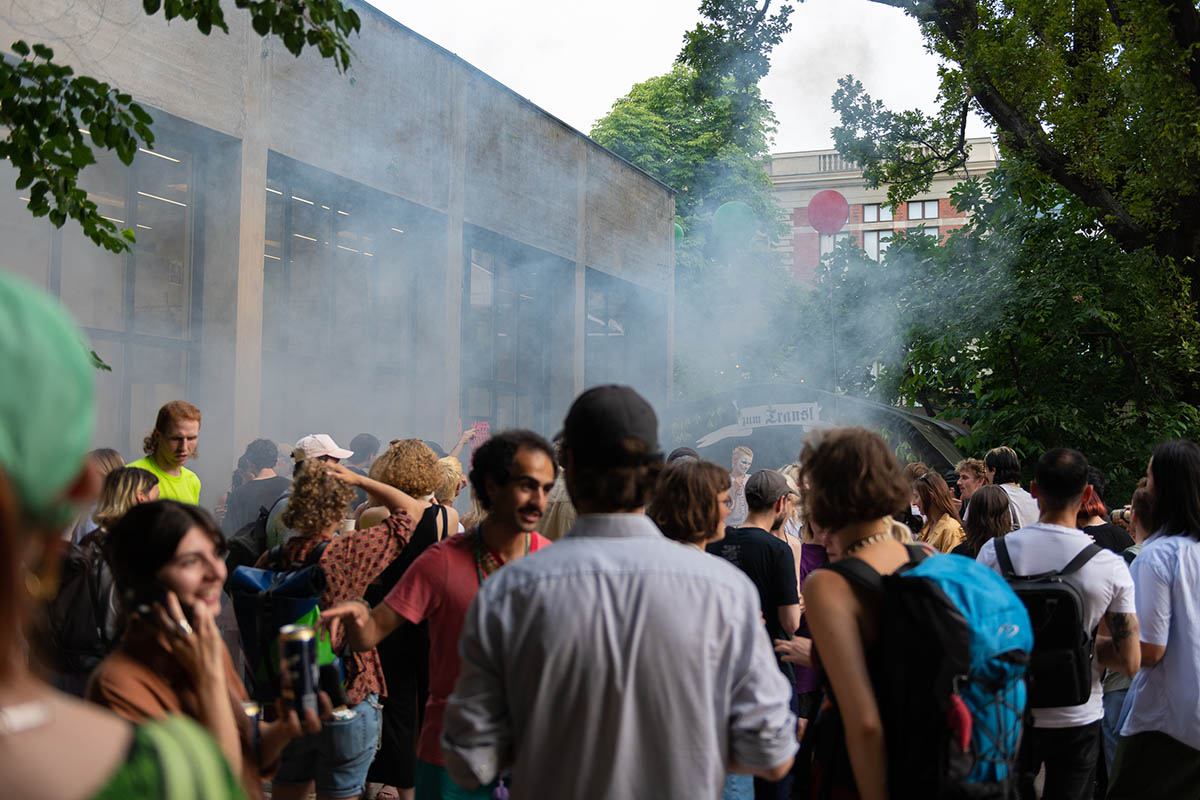
Abschließend, gibt es noch etwas, das ihr den Besucher:innen mit auf den Weg geben möchtet oder eine Botschaft, die ihr gerne teilen möchtet?
Am besten mit Timetable und Festivalguide ausgerüstet (die es vor Ort gratis gibt) so viel Zeit wie möglich am Festival verbringen. Die Ausstellungen haben täglich von 11–21 Uhr geöffnet und auch das Programm findet über alle vier Tage verteilt statt. Am Dienstag, dem Eröffnungsabend und am Freitag als Abschluss wird am Oskar-Kokoschka-Platz getanzt. Auch Rektor Gerald Bast legt auf und verabschiedet sich mit seiner Lieblingsmusik als langjähriger Rektor von der Angewandten.
Detailliertes Programm und weitere Informationen finden Sie online auf www.angewandtefestival.at




